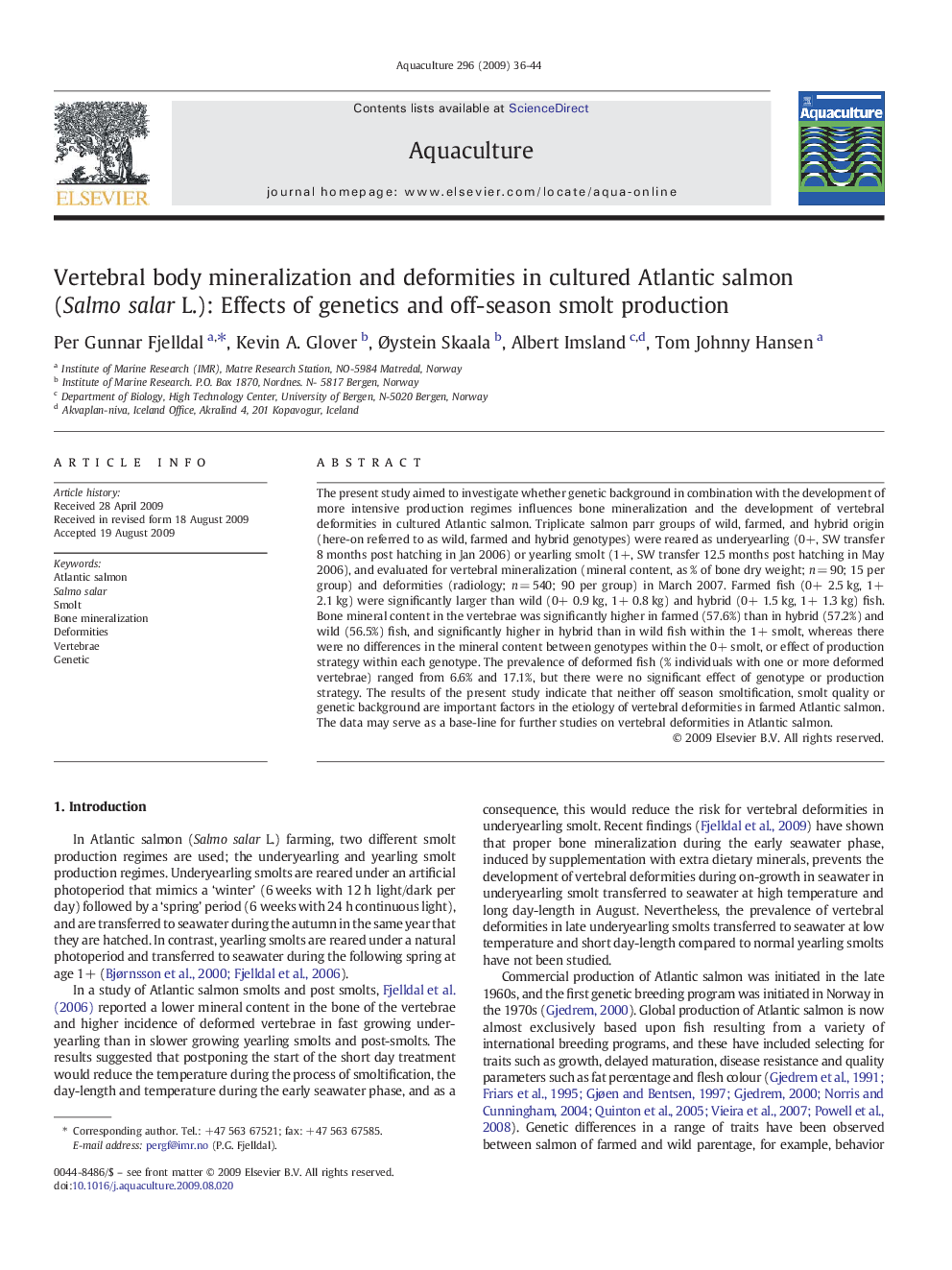| Article ID | Journal | Published Year | Pages | File Type |
|---|---|---|---|---|
| 2423878 | Aquaculture | 2009 | 9 Pages |
The present study aimed to investigate whether genetic background in combination with the development of more intensive production regimes influences bone mineralization and the development of vertebral deformities in cultured Atlantic salmon. Triplicate salmon parr groups of wild, farmed, and hybrid origin (here-on referred to as wild, farmed and hybrid genotypes) were reared as underyearling (0+, SW transfer 8 months post hatching in Jan 2006) or yearling smolt (1+, SW transfer 12.5 months post hatching in May 2006), and evaluated for vertebral mineralization (mineral content, as % of bone dry weight; n = 90; 15 per group) and deformities (radiology; n = 540; 90 per group) in March 2007. Farmed fish (0+ 2.5 kg, 1+ 2.1 kg) were significantly larger than wild (0+ 0.9 kg, 1+ 0.8 kg) and hybrid (0+ 1.5 kg, 1+ 1.3 kg) fish. Bone mineral content in the vertebrae was significantly higher in farmed (57.6%) than in hybrid (57.2%) and wild (56.5%) fish, and significantly higher in hybrid than in wild fish within the 1+ smolt, whereas there were no differences in the mineral content between genotypes within the 0+ smolt, or effect of production strategy within each genotype. The prevalence of deformed fish (% individuals with one or more deformed vertebrae) ranged from 6.6% and 17.1%, but there were no significant effect of genotype or production strategy. The results of the present study indicate that neither off season smoltification, smolt quality or genetic background are important factors in the etiology of vertebral deformities in farmed Atlantic salmon. The data may serve as a base-line for further studies on vertebral deformities in Atlantic salmon.
